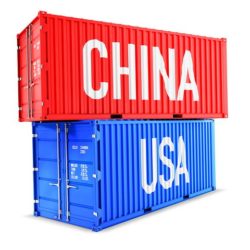China suffers 33% drop in popularity among supply chain leaders

A third of manufacturing companies have already moved sourcing and production activities out of China or plan to do so in the next two to three years. That is the key finding from a survey by analyst firm Gartner among 260 global supply chain leaders in February and March 2020. Many of the respondents were already looking for – or had found – other options due to tariff costs and resilience concerns. The COVID-19 pandemic, which has put supply chains under increased pressure, is now accelerating the shift to alternative locations such as Vietnam, India and Mexico.
“Global supply chains were being disrupted long before COVID-19 emerged,” states Kamala Raman, Senior Director Analyst with the Gartner Supply Chain Practice. “Already in 2018 and 2019, the US/China trade war made supply chain leaders aware of the weaknesses of their globalized supply chains and question the logic of heavily outsourced, concentrated and interdependent networks. As a result, a new focus on network resilience and the idea of more regional manufacturing emerged.”
Primary reasons: tariff costs and network resilience
Over the past decades, China has established itself as the ‘go-to’ destination for high-quality, low-cost manufacturing. However, Gartner’s ‘Weathering the Supply Chain Storm’ survey shows that the margin between those companies planning to add jobs in China versus taking them away narrowed sharply in 2019. The two primary reasons are the increase in tariff costs and network resilience. According to Raman, tariffs imposed by the US and Chinese governments in recent years have increased supply chain costs by up to 10% for more than 40% of organizations, and the impact has been even higher for just over 25% of respondents. As a result, companies are increasingly switching to alternative locations such as Vietnam, India and Mexico, she explains.
When asked about the resilience of their network – i.e. their supply chain visibility and the agility to shift sourcing, manufacturing and distribution activities around quickly – only 21% of the survey respondents describe it as highly resilient. In view of disruptions such as Brexit, the US/China trade war and COVID-19 this is a clear area of focus for supply chain leaders, however, with 55% expecting to have a highly resilient network in the next two to three years. There is no doubt that resilience has a price; 58% of respondents expect that more resilience will also result in additional structural costs to the network.
Moving closer to demand
One way to increase resilience is to establish regional supply chains, and around 25% of the survey respondents have already regionalized or localized manufacturing to be closer to demand. This can ease delays and shortages in times of disruption, but comes at a cost of adding more players to the ecosystem and increasing the overall network complexity. “Many Western organizations will have to explore new forms of automation on the factory floor to decrease the costs of nearshore or onshore production. Some also favour a partial option, such as manufacturing in Asia and moving only the final assembly closer to the customer,” concludes Raman.










